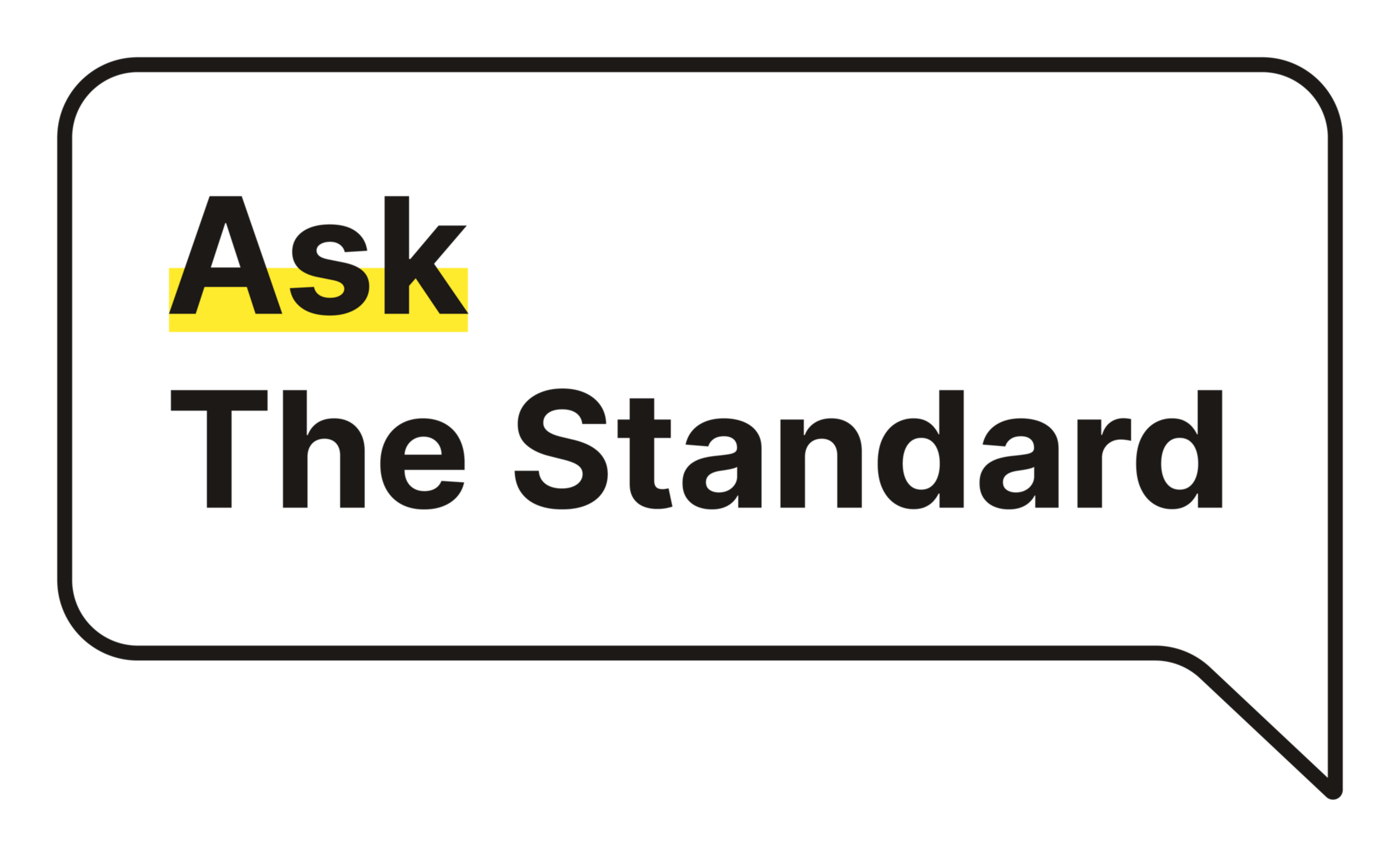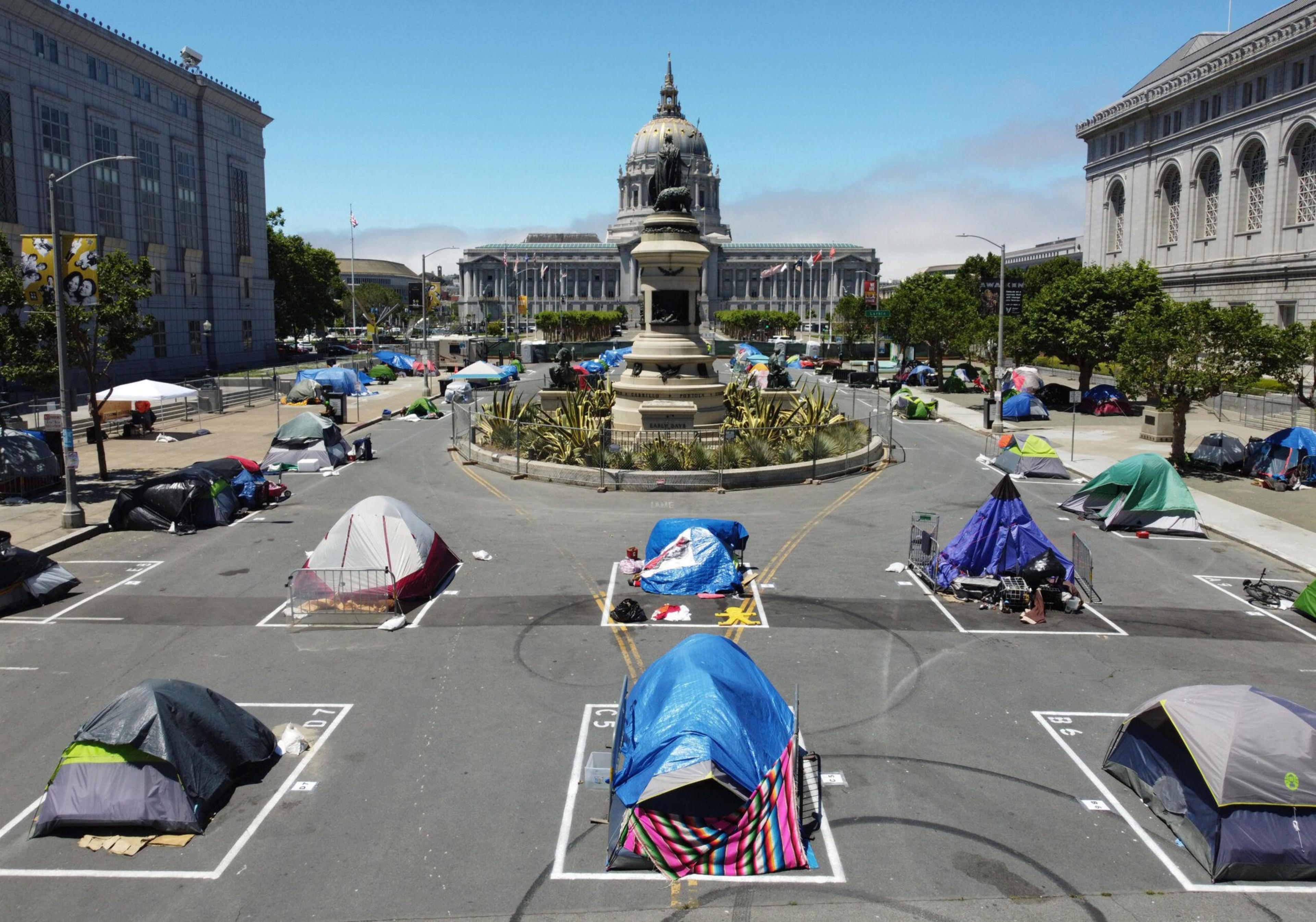Ask The Standard tackles the widely held questions about homelessness in San Francisco: What neighborhoods in San Francisco have the most homeless people?

The 2022 Point-in-Time Count found that more than 7,750 people were homeless in San Francisco and that nearly half—3,848—lived in the supervisorial district that contained the Tenderloin. (The boundaries of the supervisor districts changed last April, after the survey was done.)
The district with the second-most homeless people, with 1,115 unhoused residents, contained the Bayview, Potrero Hill and parts of the Outer Mission.
There are far fewer homeless people living in the city’s western neighborhoods. The districts that contained the Sunset, Richmond and Lake Merced neighborhoods had a total of 465 homeless people, just 6% of the city’s total.

How Much Money Does San Francisco Spend on Homelessness?
The city’s Department of Homelessness and Supportive Housing had a budget of $672 million in fiscal year 2023, which ends June 30. More than 60% of the money pays for housing, while 20% goes to shelter and the rest is for prevention, outreach and staffing.
But those aren’t the only funds the city spends on homelessness. Other departments—including the Department of Emergency Management, the fire department, the police department, the Department of Public Health and the Human Services Agency—also put some of their resources into homeless services by responding to street crises, clearing encampments, doing street outreach and providing financial assistance.

Who Is Homeless in San Francisco?
Of the estimated 7,754 homeless people in the city, around 1,100 are under 18, and about 600 are veterans, according to the 2022 Point-in-Time Count (opens in new tab). Around 35% of them have been homeless for at least a year or have repeatedly found themselves without housing.
Black people—who are only 6% of the city’s population—account for 38% of unhoused residents. By contrast, white people make up more than half of the general population but are only 43% of the city’s homeless population. Asian people account for 37% of San Francisco residents but are only 6% of homeless people. In a separate question on ethnicity, the survey found that nearly a third of homeless San Franciscans identified as Hispanic or Latino.
Most of the homeless population is male—62%—while 34% is female, 3% is transgender and 1% identify as gender nonconforming.
A substantial portion has found themselves without a home later in life. About a quarter of the city’s homeless population is over the age of 51, while around 20% are between 18 and 24.

Which Homeless People Get Housing in San Francisco?
In deciding who receives housing or other help, the city considers factors such as income or whether the person is caring for children, has a substance use disorder, criminal records or a history of trauma.
Unhoused individuals answer a survey about their histories, what barriers to housing they’ve faced and what might happen to them if they were left to live on the streets.
Some have criticized the process as confusing, slow and unreliable because it relies on self-reported data. The Department of Homelessness and Supportive Housing is working on revising the process based on the recommendations of a working group.
Access to shelters can be similarly difficult, as people are usually only admitted through the city’s encampment resolution process (opens in new tab), which responds to homeless encampments on an ad hoc basis—often due to complaints from neighbors—and ostensibly offers the occupants shelter.

How Many People Live in City-Owned Housing and Shelters?
The city currently provides 12,413 units of permanent supportive housing and housing vouchers for formerly homeless people, but 825 of those units sit vacant, according to the most recent report.
The city has struggled to move people into vacant rooms because the units are either in disrepair or because of issues with the San Francisco Department of Homelessness and Supportive Housing’s prioritization system. The department says it is streamlining the process of moving people into available units.
Many of the city’s permanent supportive housing units, considered to be the city’s most dignified form of public housing, are located in the Tenderloin, SoMa and Lower Nob Hill neighborhoods. But many of the older permanent supportive-housing buildings have had their issues, with clients complaining about rodent infestations, broken elevators that sometimes trap people in their rooms and a lack of services to address widespread drug use and mental illness.
The city also owns 3,169 shelter beds that it keeps at 90% occupancy to make room for emergency admissions from hospitals and jails.
The types of shelter range from vehicle and tent sites to tiny homes and warehouse-style facilities with hundreds of beds within a relatively confined space.
Navigation centers, a special type of temporary shelter, are aimed at eventually transitioning guests into permanent housing.
Motivated by the pandemic, and under the promise of state and federal reimbursements, the city began leasing privately owned hotels to shelter those living on the streets in April 2020. At the peak of the program, the city provided 2,288 rooms in 25 hotels. But the program wound down, and it ultimately cost the city tens of millions of dollars in property damage claims. However, many advocates argued that the program was a success because it helped 1,667 people transition into permanent housing, and some groups are now urging the city to lease more hotels.

How Many People Are Homeless in San Francisco?
On any given night, about 3,400 people are sleeping in San Francisco’s homeless shelters, while about 4,400 sleep on the city’s streets, according to the city’s most recent one-night count conducted in February 2022. That’s a total of nearly 7,800.
The data is collected every other year as part of the Department of Homelessness and Supportive Housing’s Point-in-Time Count (opens in new tab), which is required in order for the department to receive funding from the federal government.
The count is conducted by a group of people who travel every block of the city on a single night counting those who appear to be homeless. The one-night tally is the primary source of data about the size of the city’s homeless population. The city later follows up with interviews to get a better idea of the demographic breakdown and backstories of homeless people in San Francisco.
According to the count, overall homelessness decreased by 3.5% since 2019, though it’s still 13% higher than it was in 2017. Historical data shows that the number of homeless people peaked in 2002, with about 8,600 people living on the city’s streets or in shelters, which is 11% higher than today’s numbers.
The city estimates that more than 20,000 individuals experience homelessness locally over the course of a year, many of them for brief periods.
